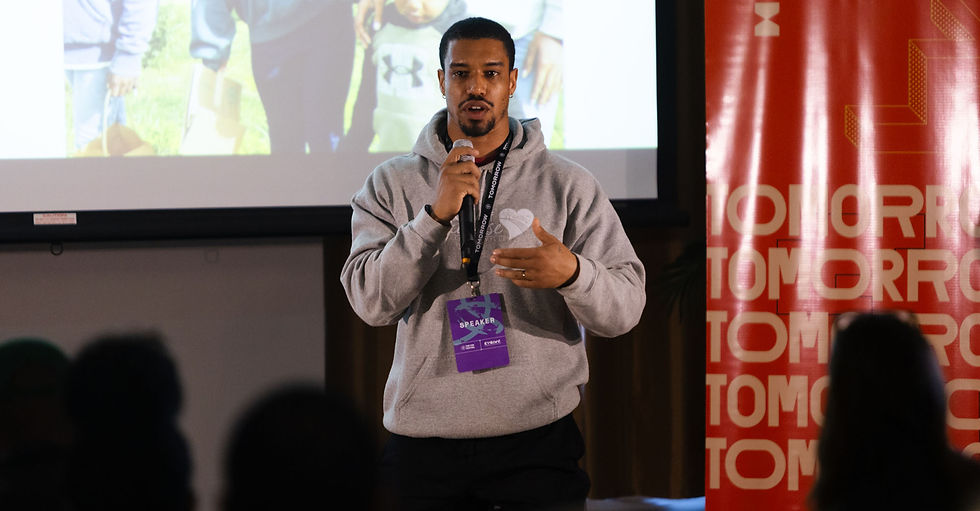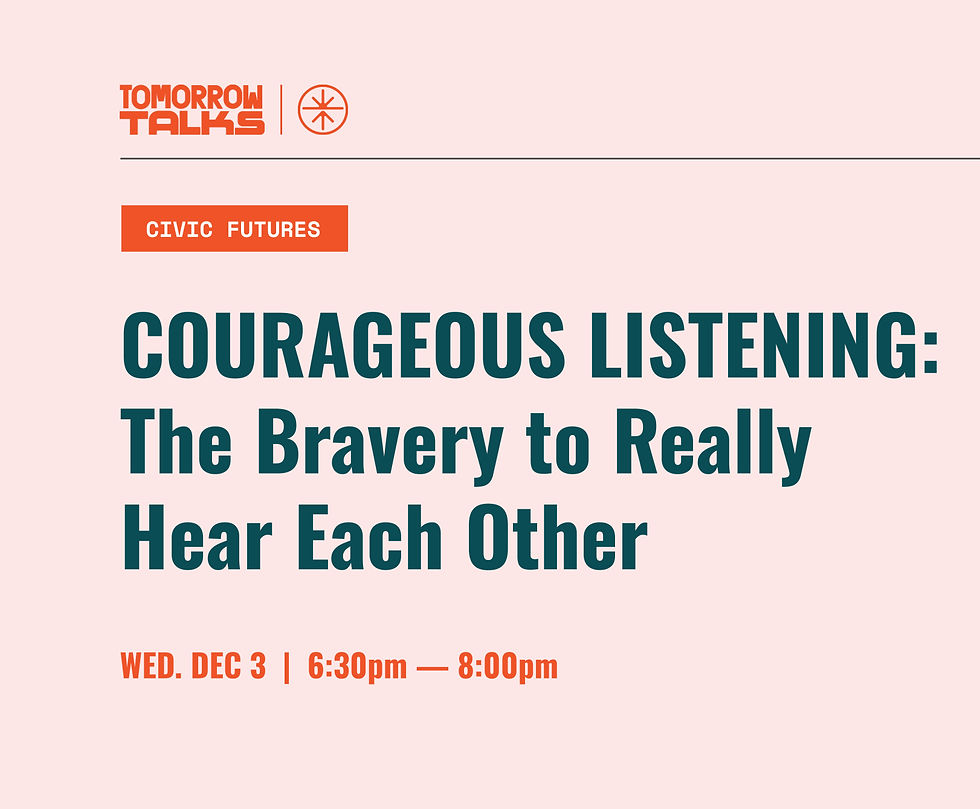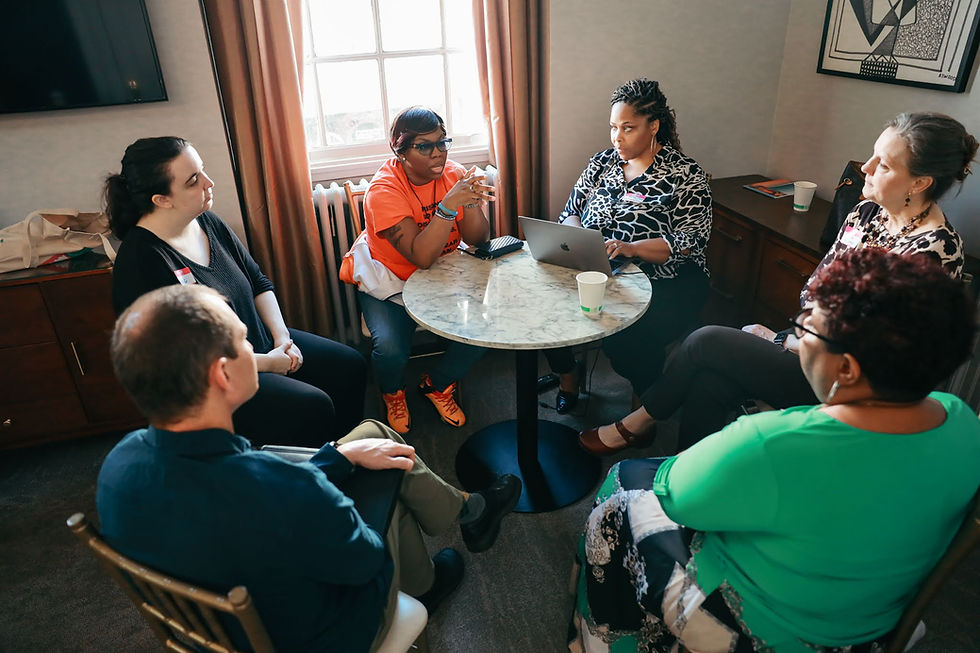Report: The Education Innovator Summit “Building a Community Schools Mindset”
- Tom Tom Foundation Staff

- 4 days ago
- 4 min read
Updated: 2 days ago

At the 2025 EVOLVE Conference during the 13th Annual Tom Tom Festival, City of Promise and African American Teaching Fellows co-hosted the Education Innovator Summit—a multi-sector convening focused on how Charlottesville can treat education as a shared community responsibility. The cornerstone of the Summit was the understanding that community safety and education are deeply connected. When kids are safe—when their needs are met—they learn. And when kids learn, the whole community benefits.
Education is a collective endeavor.
On a bright Wednesday in April, more than 100 community members—educators, parents, nonprofit leaders, city officials, students, and neighbors—came together to take on a massive but inspiring challenge: to reimagine what education could look like in Charlottesville. Together, we asked: What might a community school model look like if implemented right here in our town?
The community school model is built on the premise that schools are both products and pillars of the community. These schools partner with local stakeholders to provide a constellation of care for students—from after-school programs to wraparound services that ensure success. This model has worked in places like Dayton, New York City, and Spartanburg, SC—and it can work in Charlottesville. It relies on partnership between four spheres: Municipality, School, Community, and Home.
The energy in the room was undeniable. People showed up ready to share bold ideas and imagine what’s possible for our children and families. Everyone agreed on a core truth: education is a social issue, and schools alone cannot close the gaps that continue to widen between our most vulnerable students and their peers.
“We…know that students spend the vast majority of their time—around 80% of their waking hours—outside of school. In order to support education we have to align resources across a variety of domains around student and family success. That’s housing, transportation, healthcare, childcare, access to technology, and so on. Everything, everywhere, all at once,” Price Thomas, Executive Director of the City of Promise
Kids from safer neighborhoods struggle less with two key indicators: literacy rates and chronic absenteeism. As Price noted, “We should not have the second-lowest minority literacy score in Virginia.” Only about half of Charlottesville’s Black and economically marginalized students are reading at grade level by age 17.
The Summit faced these hard truths head-on—while surfacing tangible solutions. For two hours, participants took part in a structured process, facilitated by David Deaton of MindSalt, designed to spark creativity and collaboration. In the first round of breakout discussions, participants were grouped with people outside their areas of expertise to encourage new perspectives and “out-of-the-box” ideas. In the second round, groups were reshuffled to include subject matter experts who could assess the feasibility of those ideas. Picture lots of charts, sticky notes, collaborative energy, and a willingness to try something new.

Collaborative Groundwork
The idea for the Summit originated with Price Thomas, Executive Director of City of Promise, an organization dedicated to creating pathways from cradle to career in some of Charlottesville’s most under-resourced neighborhoods. City of Promise works to break cycles of generational poverty by fostering a culture of achievement through child-centered, dual-generation, family self-sufficiency initiatives.
Price structured the Summit around one central idea: convening power builds power. For the community schools model, this meant approaching education from every possible angle—seating experts in technology, food, and housing alongside parents and school officials.
Tamara Dias, the executive director of African American Teaching Fellows and Tom Tom Foundation Board Member, joined the conversation as a cohost. "I wanted to co-host this because building a community schools mindset requires partnership," Tamara commented. "It involves schools, organizations, and the people most impacted by our systems. TomTom understands the power of collaboration and storytelling to drive change, which makes them a great partner in helping move this conversation from ideas to implementation."
Alongside the Tom Tom Foundation staff, Price and Tamara worked to identify a broad cross-section of the community, all of whom were issued a personal invitation to join. For Tom Tom, the Summit built on years of collaboration to highlight pressing community issues and to affirm that true progress depends on breaking down silos—both in work and in thinking. The Festival provided the container for a convening like this, where a broad, interdisciplinary group could come together as problem solvers.
In recent Tom Tom programs, community partners have united to reimagine local systems—from the Reentry Summits, which explored how returning citizens can successfully reintegrate, to the 2023 Tomorrow Talk “Barriers to Early Childhood Education in Greater Charlottesville.” Each effort has reinforced a shared insight: no single institution can solve our most urgent social challenges alone.

Next Steps
“People can get behind a project they can see themselves in,” Price noted. By the end of the Summit, participants clearly saw their place within the education ecosystem. Price envisions a city with “robustly funded, in- and out-of-school programs that support students.” As he puts it, “Every kid in Charlottesville should have the opportunity to learn to read. We’re not that big.”
The solution seems simple: fund both the schools and the communities, and convince them of their interdependency. And change is already underway. The Virginia Department of Education recently awarded a $235,000 grant to Charlottesville City Schools to implement parts of the community school model—a meaningful step toward scalable change. Reflecting on the grant, Price said, “We’re talking about a school system of 4,450 kids proximate to a world-class university. At the end of the day, we’re all facing the same direction.”
Better schools create stronger communities—and vice versa. Read the Community Schools Report to explore the vision, the momentum, and the steps toward lasting change.
About Tom Tom
At the Tom Tom Foundation, our mission is to bring people together to build a brighter tomorrow. Each April, the Tom Tom Festival serves as a civic platform where big issues—like reentry—can be explored through honest conversation, community partnership, and shared imagination.












